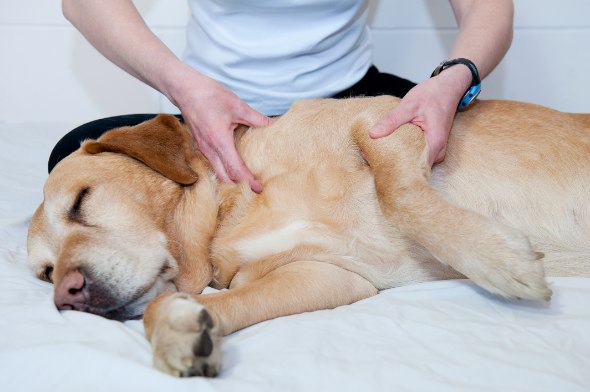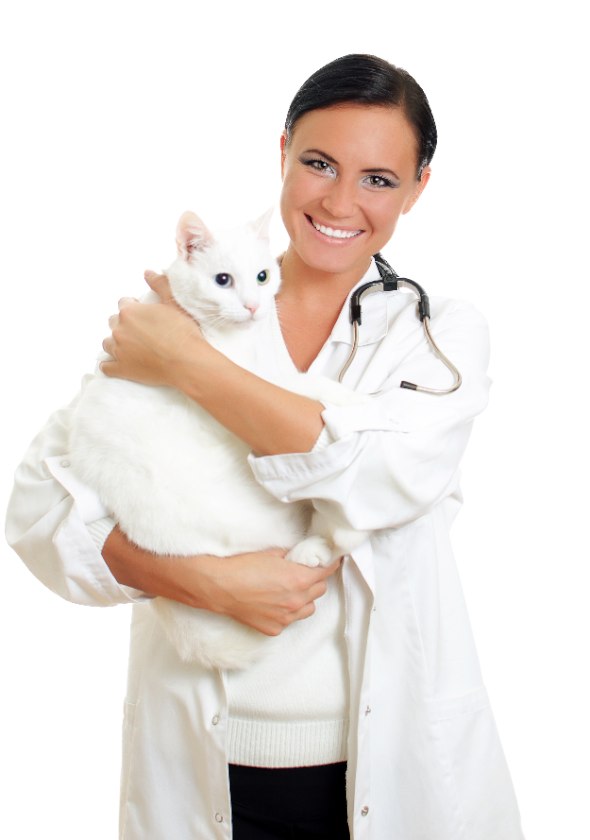The Whole Pet
Jul 30, 2013 03:11AM ● By Style
Acupuncture, the insertion of thin needles into certain points in the skin, is an ancient treatment originating in China so long ago that the time period is uncertain.
Other holistic methodologies are more recent, such as reiki, a Japanese spiritual practice developed in 1922.
The American Holistic Veterinary Medical Association lists 27 modalities in its brochure (including the two above), as well as clinical nutrition, laser therapy, homeopathy and chiropractics. Number 28 says, “Others as they come to our attention,” and opens up the list even more. Some of these modalities have been found effective when tested in a scientific manner; others may show no evidence attesting to their value.
INTEGRATIVE MEDICINE AT UC DAVIS
The University of California, Davis, Veterinary Medicine Teaching Hospital is known globally. Recently, it opened a new Integrative Medicine Service. Although the hospital treats mostly patients from the Davis/Sacramento area, others come from all parts of the country—and even worldwide.
“This Integrative Medicine Service will start with disciplines like acupuncture,” says Dr. Marilyn Koski of UC Davis, who is among the clinical faculty of that service. “We also offer veterinary physical rehabilitation, which includes muscle and joint mobility work, exercise, range-of-motion therapy, underwater treadmill, and low-level laser therapy. We hope to expand to offer other therapies like geriatric pain management, herbal medicine, chiropractic and hospice care.”
Koski, a doctor of veterinary medicine (DVM) and certified veterinary acupuncturist (CVA), has been in private practice for 20 years, treating dogs, cats and exotic species with both Western medicine and acupuncture. For 11 years she taught in the Companion Avian Exotic Pet Medicine Service, a service that treats pet birds, reptiles, fish, rabbits and rodent species. She has used acupuncture in treating dogs, cats, lizards, rabbits, tortoises, birds and exotic species—any pet animal, she says.
“Alternative, holistic, Eastern and complementary medicine are some of the many terms used to describe a wide array of disciplines,” Koski says. “I like to refer to acupuncture as a complementary medicine or integrative medicine, because I like to use it in addition to, or integrating it into a Western therapy.” Holistic generally means treating the whole patient, rather than only a localized problem. Acupuncture, she says, is certainly one way to do that.
A number of years ago, Koski was actually a skeptic about the efficacy of acupuncture. She worked for a wild animal park in Hong Kong and her colleagues, though educated in England and Australia, were Chinese veterinarians and incorporated acupuncture into their Western treatments. “I would see their patients respond and improve more quickly,” Koski says. “They would be eating sooner after surgery, they would be walking more comfortably, they would be using less pain medication. So it started to pique my interest.” At that time Koski suffered from severe migraine headaches, and her colleagues suggested she try acupuncture for the problem. “I wanted to be gracious to my colleagues and my hosts, and I went for acupuncture three times,” Koski says. “I never suffered from [a] migraine again, and that’s when I decided I needed to learn more about this.”
INCREASING ACCEPTANCE
UC Davis is not alone in offering integrative treatments. Many veterinarians have found acupuncture and other holistic modalities to be useful.
Alternative veterinary services are becoming both more popular and more available. Dean Bader, DVM, of Shingle Springs Veterinary Clinic, for example, says that 50 to 60 percent of his clients wish to use some aspect of alternative care as a complement to traditional care. “I’ve always been interested in treating animals nutritionally, because I knew there was a need,” Bader says. He uses, among other diagnostic and treatment tools, applied kinesiology, therapeutic laser and homeopathic medicine, and he trained in acupuncture for animals at Colorado State University. He also treats animals with a Skenar device that stimulates acupuncture points.
A number of years ago, Jodi Van Tine, DVM, MA, CVA, CVCVHM, of Folsom Veterinary Hospital found that herbal medicines and a change of diet made a huge difference when her dog, Bailey, underwent major abdominal surgery for cancer. As she explored Eastern medicine, Van Tine discovered that acupuncture, food therapy and Chinese herbal medicine complement each other, creating a triad of treatment modalities.
Acupuncture pinpoints collections of immune cells, nerve cells and blood vessels in the shallower parts of the body that connect to specific internal parts of the body via the spinal cord. “One of the things that I like about it [is] it’s a lot more intuitive and more complicated, and intellectually more stimulating,” Van Tine says. “When you get into internal medicine, Eastern medicine is more multidimensional than Western.”
Van Tine has been practicing acupuncture since 2006. “The really beneficial thing about Chinese medicine is you can detect changes before critical disease develops,” she says. “You can restore patients to a more healthy state so that they don’t develop the disease either as severely or as quickly—or, potentially, if all goes well, ever.”
Pets can also benefit from massage. Certified Massage Therapist Tilisa May gives massage therapy to people at The Healing Light Institute in Auburn. Though she started out giving massage just to people, says May, “at the same time I’m volunteering and very actively involved in animal rescue here in the Auburn area and Placer County.” She also periodically offers a class to the public—Introduction to Pet Massage. “My whole push behind this is to help people who’ve recently adopted or rescued an animal to connect with their new pet and for the animal to connect with them,” May shares. She says that massage can also be beneficial to aging pets. “As we get older and age, our joints get stiff, our muscles get stiff and we just don’t move around as much as we used to; massage really helps that, in people as well as animals.”
THE VETERINARIAN’S OATH
The mission for all therapies utilized to better the welfare of the animals treated, as stated in the Veterinarian’s Oath, adopted in 1969 and last amended in 2010, by the American Veterinary Medical Association.
It reads:
Being admitted to the profession of veterinary medicine, I solemnly swear to use my scientific knowledge and skills for the benefit of society through the protection of animal health and welfare, the prevention and relief of animal suffering, the conservation of animal resources, the promotion of public health, and the advancement of medical knowledge.
I will practice my profession, with dignity, and in keeping with the principles of veterinary medical ethics. I accept as a lifelong obligation the continual improvement of my professional knowledge and competence.
While holistic remedies may be disparaged by some as exotic or bizarre, it would be the rare veterinarian who did not try to live up to the oath, whether he or she is labeled holistic, integrative, Western, traditional, alternative or anything else.



